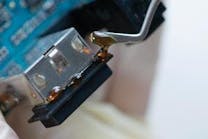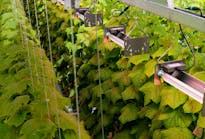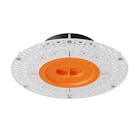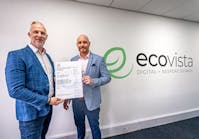DesignLights Consortium releases update to technical requirements for horticultural lighting
MEDFORD, MA – June 30, 2021 – The DesignLights Consortium (DLC) today released the final version of its updated Technical Requirements for Horticultural Lighting (Version 2.1). Scheduled to take effect September 1, the new policy establishes Qualified Products List (QPL) eligibility for three additional product types, and reflects changes made in response to stakeholder comments received this spring.
First unveiled last October and issued as a second draft in March, the DLC’s Horticultural Lighting Technical Requirements V2.1 add direct current (DC)-powered fixtures, externally supplied actively cooled horticultural fixtures, and LED replacement lamps to the DLC’s Horticultural Lighting Program.
“In response to input from our stakeholders, the DLC is pleased to add these three new product types to our Horticultural Lighting Program beginning this September,” DLC Executive Director and CEO Christina Halfpenny said. “These changes are intended to help indoor growers make the jump from legacy lighting to state-of-the-art LED horticultural lighting products and are consistent with the DLC’s mission and desire to drive greater energy savings in the fast-growing horticultural lighting sector.”
The V2.1 policy defines externally supplied actively cooled horticultural fixtures as those in which liquid, often water or a water/glycol solution, flows through input and output ports of each fixture in the system, channeled through a cooling plate or other heat exchanger within the fixture. In adding these products to its Horticultural Lighting Program, the DLC provides descriptions of how to test and report on them to ensure performance comparable to products listed under previous versions of the policy. In response to comments received following release of Draft 2 in March, the DLC changed this section of the draft policy, revising requirements for reporting of data and corresponding image showing fixture-level input power and photosynthetic photon flux (PPF) as a function of inlet fluid temperature.
V2.1 also allows QPL listing for DC-powered fixtures and describes how to test and report on them in place of the typical equivalent alternating current (AC) testing and reporting. In response to stakeholder comments, the DLC changed this section of the policy from Draft 2, with revisions to the testing and reporting range of loading points required for the test power source report.
For LED replacement lamps, the DLC responded to stakeholder input by changing the warranty requirement to three years instead of five, as had been proposed in Draft 2.
The DLC’s Horticultural QPL currently contains more than 400 products, with more being reviewed and added regularly. An increasing number of electric utilities rely on the DLC horticultural lighting specification and QPL in the design of energy efficiency programs for commercial cultivators. At least two dozen North American utilities now require the use of QPL products as a prerequisite for EE incentives; many others have incorporated the DLC Technical Requirements into their programs while not yet requiring use of products on the QPL. Two states with cannabis-specific energy efficiency regulations offer a compliance pathway that requires use of the DLC’s Horticultural Lighting QPL. By adding QPL eligibility pathways for additional product categories, the DLC’s V2.1 Horticultural Lighting Technical Requirements offer licensed cannabis cultivators in these states more options for regulatory compliance.
The DLC will host an informational webinar on the final Technical Requirements for Horticultural Lighting V2.1 at 1 p.m. EDT (10 a.m. PDT) on July 7: http://ec2-52-26-194-35.us-west-2.compute.amazonaws.com/x/d?c=13792610&l=fb077a59-3873-4373-9ff0-715e23a5ef05&r=0a9b9e6a-1aa0-4fcf-b42d-b9a0e765f967.
About DesignLights Consortium: The DesignLights Consortium® (DLC) is a non-profit organization whose mission is to achieve energy optimization by enabling controllability with a focus on quality, people, and the environment. The DLC promotes high-quality, energy-efficient lighting products in collaboration with utilities and energy efficiency program members, manufacturers, lighting designers, and federal, state, and local entities. Through these partnerships, the DLC establishes product quality specifications, facilitates thought leadership, and provides information, education, tools and technical expertise.
Contact:
DesignLights Consortium





